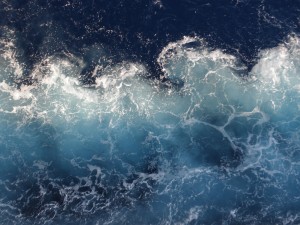
Hardev Grewal
CEO Plasmatreat PTNA & US
CEO Plasmatreat PTNA & US - Hayward, CA
Water is everywhere…just not always where we want it. This past winter, the Eastern U.S. was inundated with snow and ice, while California and the Western U.S. are suffering from extreme drought. Availability of water is a growing concern around the world as it is a vital resource for the seven billion (and counting) people on Earth.
While representing only a small fraction of water usage as compared to that used in agriculture and for energy production, industrial use of water is on the rise. A staggering 18.2 billion gallons of fresh water are used every day for industrial use in the U.S. – about 4% of the total water used for all purposes.
Manufacturing one ton of automotive steel requires about 75,000 gallons of water. Actual manufacture of the vehicle itself requires an additional 39,000 gallons. Two and a half gallons of water are needed to produce a gallon of gasoline – and 20 gallons are needed to produce a pint of beer!
Critical part cleaning, for adhesion-related applications, represents a significant portion of industrial water use. Since the replacement of Freon and other solvent cleaning processes starting in the 1980s, U.S. industrial use of aqueous cleaning processes has become the norm.
But aqueous cleaning is a cost-intensive process, whether you’re looking at it from an environmental standpoint, a dollars-and-cents standpoint, or a labor standpoint.
Water needs to be delivered; detergents, surfactants and other chemicals are added and need to be kept in balance to control the washing process; additional processing is required to treat the waste water for recycling or disposal. Rinse water must also be clean and controlled. There is an old saying that “You are only as clean as your last rinse.”
Even after the part has been washed, it is still not ready for bonding, coating, painting, or printing. It needs to be dried, requiring additional energy costs, equipment footprint, time, and labor.
Furthermore, as mentioned above, water tends to not always go where we want it. Even with the best washing and drying processes, water’s influence remains at the molecular surface where adhesion occurs, interfering with a strong bond.
Molecular water resides in the oxides of aluminum and other metals. Water is absorbed and bonded within many polymers such as ABS and nylon. However, water molecules are not usually well-bonded and do not provide a robust bonding surface.
What if there was a better way for critical cleaning of organic contaminants? What if a process did not use water or other liquids but instead actually removed water from the molecular surface while vaporizing organic contaminants? It would be even better if this nano cleaning could be accomplished without touching the part and a chemical activation could occur to chemically bond to the adhesive, coating paint, or printing ink.
Save Water
Stay Dry
Plasma Clean
Recommend- Hello Khoren, Just read your editorial. I have an immediate need for a medical device application....
- Good analysis. I’m glad you mentioned that the velocity with which space is traversed has not appreciably...
- I really like your writing style, superb information, thankyou for putting up : D.
- Great blog article.Really thank you! Really Cool.
- Very Interested. Are you represented in Australia? What is the cost of the unit? How do you retrofit?...








Write a comment